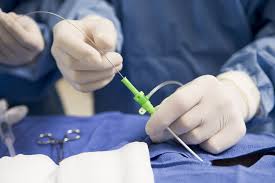General Health Tips & News
Coronary Angiography and Angioplasty: Understanding the Test
By A.S. (staff writer) , published on February 03, 2024

Medicine Telehealth Health
Overview
Coronary angiography is a diagnostic test that identifies blockages in coronary arteries using contrast dye injected through a catheter. This cardiac angiogram enables doctors to visualize blood flow in the heart using X-ray imaging.
Indications for Coronary Angiography
Recommended for patients at risk of a heart attack, experiencing unstable angina, atypical chest pain, aortic stenosis, or unexplained heart failure.
Preparing for the Test
Diagnostic Imaging
Prior imaging (MRI or CT scans) helps pinpoint heart issues.
Pre-Test Preparations
-
Fast for eight hours.
-
Arrange transportation home.
-
Have someone stay with you post-test.
-
Check into the hospital on the test morning.
Hospital Procedures
-
Wear a hospital gown and sign consent forms.
-
Blood pressure check, IV line insertion, blood sugar check, blood test, and ECG may be conducted.
-
Inform the doctor of allergies, past reactions to contrast dye, sildenafil use, or potential pregnancy.
During the Coronary Angiography
Sedation
Receive a mild sedative for relaxation while staying awake.
Catheter Insertion
A sheath is inserted into an artery in the groin or arm, guiding a catheter to an artery in the heart, monitored on a screen.
Sensations
Feelings during the test are minimal, with a slight burning sensation after dye injection.
Interpreting Results
Results reveal normal blood supply and any blockages. If found, the doctor may perform angioplasty and insert an intracoronary stent for immediate blood flow improvement.
Risks Associated with Coronary Angiography
While generally safe, risks include bleeding, blood clots, artery or vein injury, a small risk of stroke, rare heart attack chance, or the need for bypass surgery.
Recovery and Home Care
Immediate Post-Test Guidelines
-
Relax and stay hydrated.
-
Avoid smoking and alcohol.
-
Don’t drive or operate machinery.
Bandage Removal and Activities
-
Remove the bandage after 24 hours.
-
No sex or heavy exercise for two days.
-
Avoid baths, hot tubs, or pools for at least three days; showering is allowed.
-
Refrain from applying lotion near the puncture site for three days.
Follow-Up with Heart Doctor
Schedule a follow-up a week after the test for further assessment.
How long does an angiogram take?
An angiogram can take as little as 15 minutes. However, some can take a few hours. It depends on what procedures your provider does after they find the issue.
Are you awake during an angiogram?
It depends. Most people receive medicine to sedate or relax them. Others receive general anesthesia, which makes them sleep.
How painful is an angiogram?
An angiogram isn’t very painful. You’ll feel a needle going into your skin when your provider injects an anesthetic to numb the area where they’ll insert a catheter. After that, you most likely won’t feel any more pain during the procedure.
Are angiogram and angioplasty the same?
No. An angiogram lets your provider see a blockage in your artery. During an angiogram, your provider can do an angioplasty to treat a blockage.
Angioplasty is an interventional procedure often performed during an angiogram. It is designed to treat blockages identified in blood vessels, particularly arteries. The goal is to open narrowed or obstructed vessels to restore normal blood flow.
Procedure Overview:
-
Balloon Catheter: A balloon-tipped catheter is inserted through the same access point used for the angiogram.
-
Balloon Inflation: The balloon is inflated at the site of the blockage, compressing the plaque against the artery walls.
-
Stent Placement: In some cases, a stent (a small, mesh-like tube) may be inserted to keep the artery open. This is often done after angioplasty.
References
-
American Heart Association. What Is a Coronary Angiogram? (https://www.heart.org/-/media/Files/Health-Topics/Answers-by-Heart/What-Is-a-Coronary-Angiogram.pdf) Accessed 8/5/2022.
-
National Heart, Lung, and Blood Institute. Heart Tests (https://www.nhlbi.nih.gov/health/heart-tests). Accessed 8/5/2022.
-
NHS. Angiography (https://www.nhs.uk/conditions/angiography/). Accessed 8/5/2022.
-
Society for Vascular Surgery. Angiogram (https://vascular.org/patients-and-referring-physicians/conditions/angiogram). Accessed 8/5/2022.
Find articles related to: Medicine Telehealth Health
More articles about General Health Tips & News
Back to the Health Tips Index




